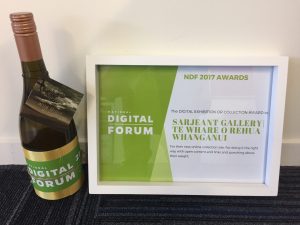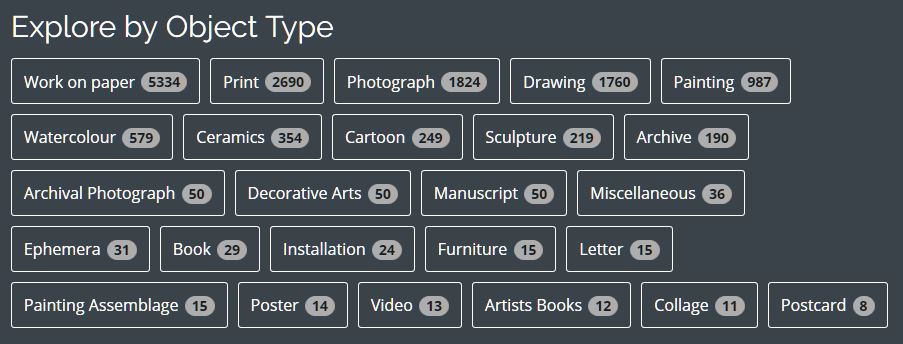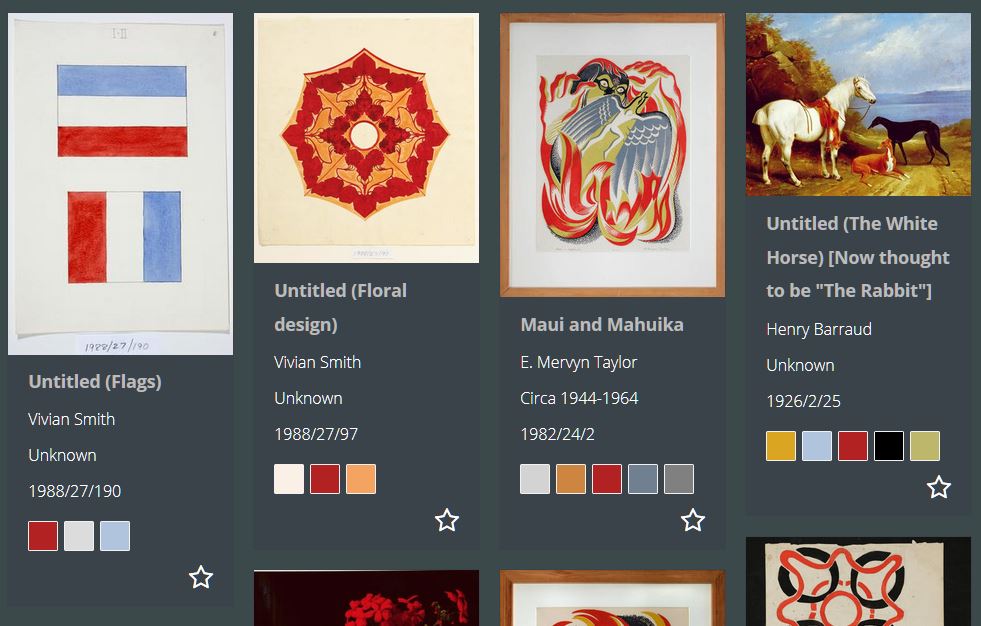 We’ve launched an online collection site for Sarjeant Gallery Te Whare o Rehua Whanganui. It’s the result of a few months of experimentation and collaboration with the Gallery team. The site has been recognised at NZ’s National Digital Forum conference, being awarded the annual Digital Exhibition or Collection award.
We’ve launched an online collection site for Sarjeant Gallery Te Whare o Rehua Whanganui. It’s the result of a few months of experimentation and collaboration with the Gallery team. The site has been recognised at NZ’s National Digital Forum conference, being awarded the annual Digital Exhibition or Collection award.
This first phase includes options to explore the collection by colour and image orientation, automated subject tagging using Google Vision API, basic statistics on the breakdown of the collection, and some natural language text which we build up from the raw collection management data and then display on the artwork detail page.

Sarjeant Gallery is in Whanganui, New Zealand. The Gallery’s collection consists of over 8,000 artworks and archival items spanning four centuries of European and New Zealand art history. The collection contains works in all media, including painting by old masters and contemporary artists, drawings, photographs, sculptures and ceramics. For the first time, almost the entire collection of Sarjeant Gallery is available online. No collection catalogue is perfect (perfection is the enemy of done) and the decision was made early in the project to publish all of the records for Sarjeant Gallery’s collection.
Publishing the entire collection has many advantages. There are more artworks for the software to connect, with these connections encouraging exploration and serendipitous discovery by the visitors. Google Analytics can be used to gain a broader picture of the areas of the collection the visitors are looking at. The volume of online visitors grows as the volume of pages on the site grows. While there is a risk to publishing information which is incomplete or incorrect, having more eyes on the data provides an opportunity to improve the collection catalogue.
Explore by colour
We extract the dominant colours out of the collection images and provide these colours as options to explore and search the collection. We’re using the 140 named CSS web colours, so it’s also possible to search on the colour names. e.g. “Black Cat” will find photographs mentioning cat if one of the detected colours was black.

Google Cloud Vision Tags
We’re using Google Vision to automatically add subject keywords to the works. Many of the original records don’t have descriptions, so the tags provide an invaluable option for searching the collection. The tags are often very specific, so they cover terms that wouldn’t necessarily be added manually by curators. We’ve built in options for administrators to remove specific tags from either one record or the whole site.
Natural language
Like most internal catalogues, the source data can appear dry and formal. For Sarjeant Gallery a small number of artwork records already had more detailed curatorial descriptions, but for most records there were only the basic keyword (object type, production place, record type etc) and text (medium, measurements etc) fields.
We’ve combined the object type, production place and production date data into a sentence on the page for each artwork. By doing an automated search on the object type, we’re able to display a count of the related artworks of the same type. This continues our goal to give the user a sense of the scale of the collection. Object type and production place both appear as links so that the visitor can easily jump to all of the works in the same category.
Read more about the project
There are a couple of longer posts on the project on Medium.com if you’d like to find out more on how we’ve developed the site:
Looking at Sarjeant Gallery’s collection through robot eyes
Building an accessible online collection for Sarjeant Gallery